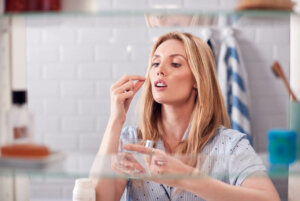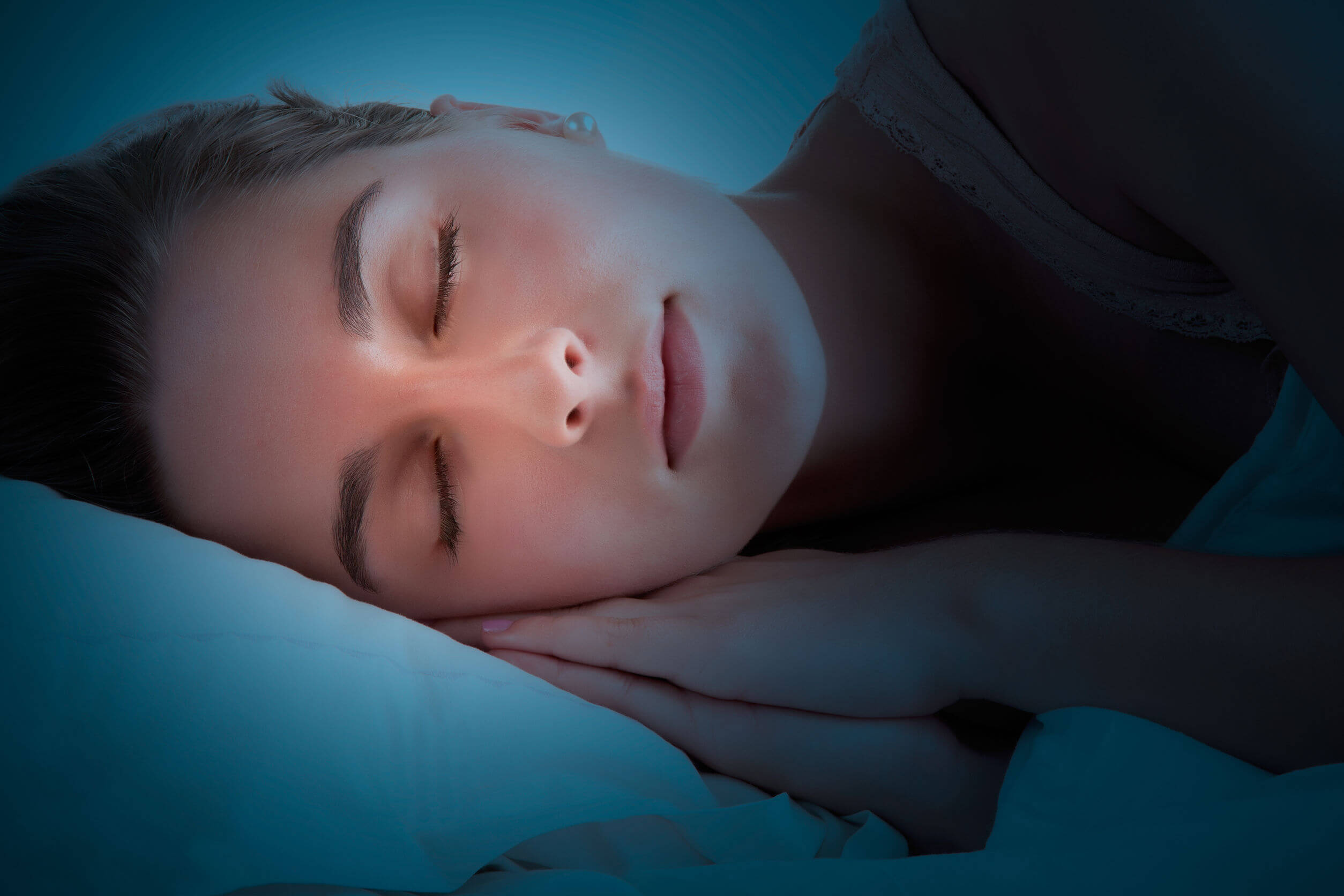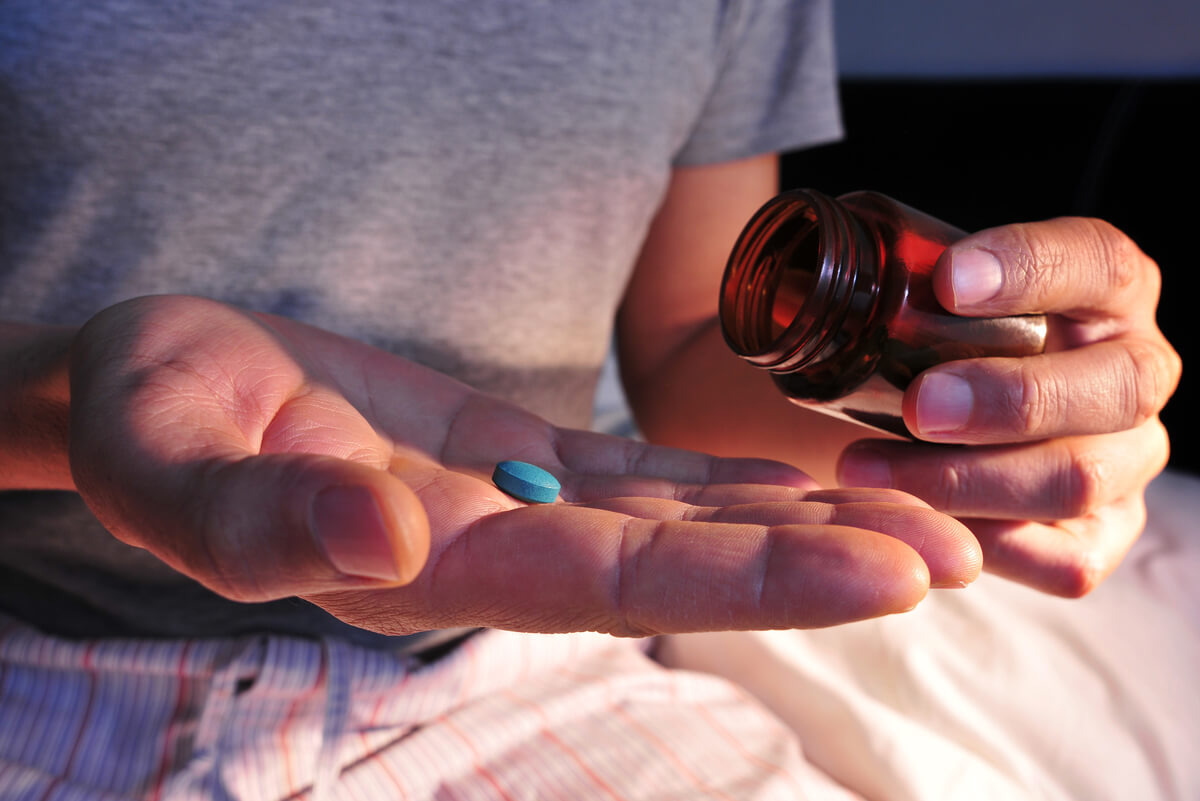The Treatment of Migraines

Contrary to what we may think at first glance, the treatment of migraines aims to place more emphasis on self-care than on the use of drugs. The latter, although necessary in some cases, aren’t the only way to control migraines.
In other words, the treatment isn’t based exclusively on one measure, but on the combination of several in order to provide the person with the greatest amount of benefits possible in their day-to-day life, not only in those moments when they experience migraines, but also when it comes to preventing new episodes.
Self-care and lifestyle

Self-care and lifestyle habits can go a long way toward promoting well-being, and even more so when you have migraines. Hence, health experts insist on recommending maintaining habits such as sleeping and resting well, eating healthy, staying hydrated, exercising regularly, among others.
When a migraine appears, instead of forcing the body to respond as usual and try to carry on as if you weren’t in pain, the best thing you can do is slow down and take care of yourself. With this in mind, we suggest the following self-care practices, which in addition to being very useful when it comes to obtaining relief, can also function as preventive measures.
Cold compresses
Cold compresses have an anti-inflammatory effect that makes the brain feel less pain. To get the most out of them, it’s best to wet a fine cloth or gauze and apply it on the most painful points (forehead, neck, neck, etc.), for at least half an hour (with some rest intervals).
Get enough rest and sleep
As we mentioned before, instead of forcing the body to function as usual and make the discomfort worse, the best thing to do in the case of a migraine is to rest and try to get enough sleep.
- Maintaining a proper sleep routine can go a long way in both preventing and alleviating migraine episodes.
Drink coffee
Although caffeine (found in coffee, chocolate, tea, and other sources) has been linked to the onset of migraines, it has also been found to be helpful in contributing to relief.
Regarding this point, the MSD Manual indicates that “the foods that trigger migraines vary from one person to another.”
- You can try drinking a little coffee and assessing whether it provides benefits or not.
- It’s important to maintain moderation and avoid any excess (drink a lot of coffee or abstaining completely) because this could aggravate the situation.
Get fresh air
Although you can rest in a quiet, dark, cool room that’s not near sources of noise, it’s not a good idea to shut yourself up completely. Staying in poorly ventilated places that prevent fresh air from circulating and that contain various odors can further exacerbate discomfort.
Going outside for fresh air in good weather is a good idea when you have a migraine. But beware, some people with migraines may be more susceptible to cold or humidity, so it’s not a good idea to go for a walk on days when these conditions prevail.
- If it’s not possible to go out to get fresh air, try to keep the space where you are well ventilated.
Techniques for managing stress
Stress can be both a trigger and a source of stress for people who suffer from migraines. It’s important to manage stress properly to prevent symptoms from exacerbating and discomfort from prolonging. In this regard, different relaxation techniques can be applied.
- Yoga, meditation, deep breathing exercises, and the like can help with migraine relief.
- Psychological therapy can also be helpful.
Clear your mind
To complement the previous point, experts recommend doing some simple activity that helps you to clear your mind, relax, and get distracted. This is also a good technique for migraine relief. Everyone can choose the option that works best for them.
Pharmacotherapy

Over-the-counter medications (such as acetaminophen, ibuprofen, acetylsalicylic acid, etc.) can help relieve discomfort when migraine headaches are just starting or are mild.
The regular consumption of these types of medications can also have the opposite effect. For this reason, you must be very careful when using them and always follow the doctor’s recommendations.
According to the MSD Manual, some of the medications that can be included in the treatment of a migraine when it’s beginning or is still mild are triptans, ditans, monoclonal antibodies, dihydroergotamine, or some antiemetic drugs.
- Although it’s more common to use medicines in pill form, in some cases, using injections may be necessary (when the migraine doesn’t subside).
Natural medicine
Aromatherapy (with lavender) and some herbal teas with analgesic, sedative, or relaxing properties have been suggested as adjuvants in some cases of migraine. Its objective is to contribute to the relief, without replacing the self-care or any other types of treatment that a specialist has prescribed.
It’s important to note that although there have been several studies regarding the effectiveness of aromatherapy in cases of migraine, this is still the subject of debate. Mainly because it’s not beneficial in all cases.
Not all bodies respond in the same way, nor do they have the same needs. Therefore, you should bear in mind that there are people with migraines who can benefit from the pleasant and relaxing aroma of lavender, there are others who experience a great sensitivity to odors in general and don’t get any relief with this type of therapy. In fact, quite the opposite.
- Before trying a natural remedy, it’s best to consult with your neurologist.
Final recommendations regarding the treatment of migraines
Migraines are a common neurological disorder that, even though they can sometimes be very annoying, can be controlled with good self-care and the guidelines prescribed by a doctor. Likewise, it’s highly recommendable that you see your doctor for periodic checkups.
If you suffer from migraines and you think that you need to improve some lifestyle habits or even various aspects of the treatment as such, don’t hesitate to consult a specialist so that they can offer you the most appropriate guidance for your case.
Contrary to what we may think at first glance, the treatment of migraines aims to place more emphasis on self-care than on the use of drugs. The latter, although necessary in some cases, aren’t the only way to control migraines.
In other words, the treatment isn’t based exclusively on one measure, but on the combination of several in order to provide the person with the greatest amount of benefits possible in their day-to-day life, not only in those moments when they experience migraines, but also when it comes to preventing new episodes.
Self-care and lifestyle

Self-care and lifestyle habits can go a long way toward promoting well-being, and even more so when you have migraines. Hence, health experts insist on recommending maintaining habits such as sleeping and resting well, eating healthy, staying hydrated, exercising regularly, among others.
When a migraine appears, instead of forcing the body to respond as usual and try to carry on as if you weren’t in pain, the best thing you can do is slow down and take care of yourself. With this in mind, we suggest the following self-care practices, which in addition to being very useful when it comes to obtaining relief, can also function as preventive measures.
Cold compresses
Cold compresses have an anti-inflammatory effect that makes the brain feel less pain. To get the most out of them, it’s best to wet a fine cloth or gauze and apply it on the most painful points (forehead, neck, neck, etc.), for at least half an hour (with some rest intervals).
Get enough rest and sleep
As we mentioned before, instead of forcing the body to function as usual and make the discomfort worse, the best thing to do in the case of a migraine is to rest and try to get enough sleep.
- Maintaining a proper sleep routine can go a long way in both preventing and alleviating migraine episodes.
Drink coffee
Although caffeine (found in coffee, chocolate, tea, and other sources) has been linked to the onset of migraines, it has also been found to be helpful in contributing to relief.
Regarding this point, the MSD Manual indicates that “the foods that trigger migraines vary from one person to another.”
- You can try drinking a little coffee and assessing whether it provides benefits or not.
- It’s important to maintain moderation and avoid any excess (drink a lot of coffee or abstaining completely) because this could aggravate the situation.
Get fresh air
Although you can rest in a quiet, dark, cool room that’s not near sources of noise, it’s not a good idea to shut yourself up completely. Staying in poorly ventilated places that prevent fresh air from circulating and that contain various odors can further exacerbate discomfort.
Going outside for fresh air in good weather is a good idea when you have a migraine. But beware, some people with migraines may be more susceptible to cold or humidity, so it’s not a good idea to go for a walk on days when these conditions prevail.
- If it’s not possible to go out to get fresh air, try to keep the space where you are well ventilated.
Techniques for managing stress
Stress can be both a trigger and a source of stress for people who suffer from migraines. It’s important to manage stress properly to prevent symptoms from exacerbating and discomfort from prolonging. In this regard, different relaxation techniques can be applied.
- Yoga, meditation, deep breathing exercises, and the like can help with migraine relief.
- Psychological therapy can also be helpful.
Clear your mind
To complement the previous point, experts recommend doing some simple activity that helps you to clear your mind, relax, and get distracted. This is also a good technique for migraine relief. Everyone can choose the option that works best for them.
Pharmacotherapy

Over-the-counter medications (such as acetaminophen, ibuprofen, acetylsalicylic acid, etc.) can help relieve discomfort when migraine headaches are just starting or are mild.
The regular consumption of these types of medications can also have the opposite effect. For this reason, you must be very careful when using them and always follow the doctor’s recommendations.
According to the MSD Manual, some of the medications that can be included in the treatment of a migraine when it’s beginning or is still mild are triptans, ditans, monoclonal antibodies, dihydroergotamine, or some antiemetic drugs.
- Although it’s more common to use medicines in pill form, in some cases, using injections may be necessary (when the migraine doesn’t subside).
Natural medicine
Aromatherapy (with lavender) and some herbal teas with analgesic, sedative, or relaxing properties have been suggested as adjuvants in some cases of migraine. Its objective is to contribute to the relief, without replacing the self-care or any other types of treatment that a specialist has prescribed.
It’s important to note that although there have been several studies regarding the effectiveness of aromatherapy in cases of migraine, this is still the subject of debate. Mainly because it’s not beneficial in all cases.
Not all bodies respond in the same way, nor do they have the same needs. Therefore, you should bear in mind that there are people with migraines who can benefit from the pleasant and relaxing aroma of lavender, there are others who experience a great sensitivity to odors in general and don’t get any relief with this type of therapy. In fact, quite the opposite.
- Before trying a natural remedy, it’s best to consult with your neurologist.
Final recommendations regarding the treatment of migraines
Migraines are a common neurological disorder that, even though they can sometimes be very annoying, can be controlled with good self-care and the guidelines prescribed by a doctor. Likewise, it’s highly recommendable that you see your doctor for periodic checkups.
If you suffer from migraines and you think that you need to improve some lifestyle habits or even various aspects of the treatment as such, don’t hesitate to consult a specialist so that they can offer you the most appropriate guidance for your case.
- Bartleson J, Cutrer FM. Migraine update. Diagnosis and treatment [Internet]. Clinical & Health Affairs. 2010 [cited 2021 Jun 26]. p. 36–41. Available from: https://www.researchgate.net/publication/44696902_Migraine_update_Diagnosis_and_treatment
- Buonanotte CF, Buonanotte MC. Migraña. Neurol Argentina [Internet]. 2013 [cited 2021 Jun 26];5(2):94–100. Available from: https://www.elsevier.es/es-revista-neurologia-argentina-301-articulo-migrana-S1853002812001541
- Migraña | Oficina para la Salud de la Mujer [Internet]. [cited 2021 Jun 26]. Available from: https://espanol.womenshealth.gov/a-z-topics/migraine
- Pascual J. Guía de recomendaciones para el diagnóstico y tratamiento de la migraña en la práctica clínica [Internet]. [cited 2021 Jun 26]. Available from: https://www.semg.es/doc/documentos_SEMG/consenso_migrana.pdf
- Silberstein SD. Migraña – Trastornos neurológicos [Internet]. Manual MSD versión para profesionales. [cited 2021 Jun 26]. Available from: https://www.msdmanuals.com/es/professional/trastornos-neurológicos/cefalea/migraña
Este texto se ofrece únicamente con propósitos informativos y no reemplaza la consulta con un profesional. Ante dudas, consulta a tu especialista.







